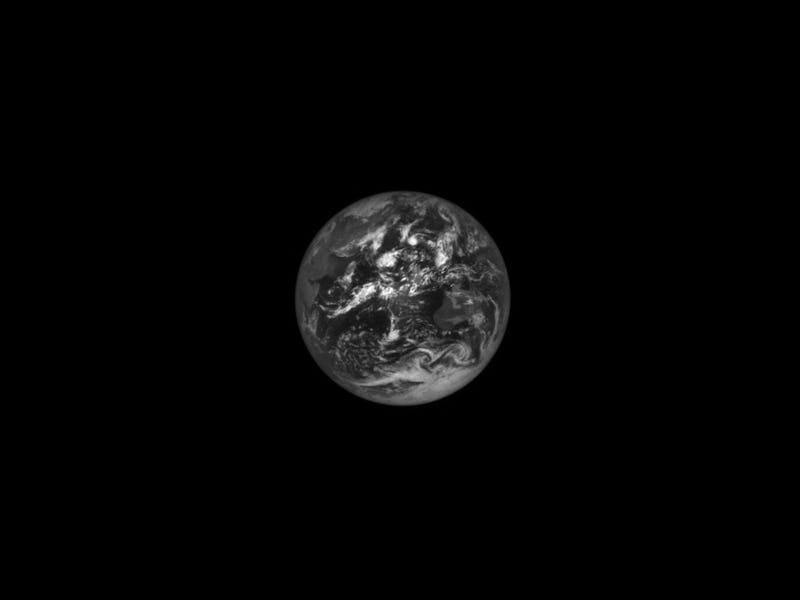Look! NASA’s asteroid-bound Lucy mission snaps a stunning photo of a lonely Earth
This spacecraft got a good look at the Moon, too.

Two stunning new photos from a NASA probe slingshotting toward the outer Solar System show Earth as a small marble world.
NASA’s Lucy spacecraft caught sight of the celestial body first on October 13 from 890,000 miles away, and then from 380,000 miles away on October 15. (The Moon is about 238,000 miles from Earth, for comparison.) Lucy is a mission designed to study Trojan asteroids — asteroids that share an orbit with a planet behind and in front of it — of Jupiter, but needs a gravity assist from Earth to fling out there.
It will require another Earthly assist in two years before it heads towards its destination near Jupiter. Gravity assists use the force of a planet to stretch a spacecraft’s fuel budget, saving precious propellant while allowing spacecraft to reach destinations more quickly.
The imagery summons the theme of origins, the space agency explains in a photo description published Tuesday. Trojan asteroids are remnants of the early Solar System that have survived relatively intact, and Lucy itself is named after the famous Australopithecus afarensis skeleton, an early human ancestor. (In 2025, Lucy will also fly by the asteroid Donaldjohanson, named after the person who discovered the skeleton.)
When Lucy paid a visit to Earth, team members instructed it to snap a view of our planet using the identical pair of cameras on its Terminal Tracking Camera (T2CAM) system. The image-taking helped calibrate them so it can track two populations of Jupiter’s trojans, one just ahead of and one just behind of the Solar System leviathan. Lucy will visit one population in 2027 and 2028 before returning to Earth for a third flyby to propel it to the asteroids that trail behind Jupiter.
NASA’s Lucy spacecraft captured an image of the Earth from 380,000 miles away on October 15, 2022. This is a cropped view.
If you peer at the top left corner of the October 15 image of Earth, a clear patch of sky reveals the east coast of Africa. It’s Ethiopia, NASA says, home to the village of Hadar where, almost 48 years ago in November 1974, Johanson found fossils of the human ancestor that walked 3.2 million years ago.
And much like the revelations the Australopithecus offered about the earlier chapters of human evolution, the spacecraft now soaring away from Earth will explore the origins of the Solar System.
The Jupiter Trojans — Donaldjohanson is the only non-Trojan asteroid that Lucy will visit — are thought to be remnants of the early Solar System that have, until now, evaded astronomical study.
NASA’s Lucy spacecraft captured this image of the Earth (right) and the Moon (left) from a distance of 890,000 miles on October 13, 2022.
Ahead of this month’s flyby, Lucy team members were looking forward to the photos. “I’m especially excited by the final few images that Lucy will take of the Moon,” John Spencer, acting deputy project scientist at the Southwest Research Institute (SwRI) in Texas, says in an October 13 flyby description from NASA. SwRI leads the Lucy mission for NASA. “Counting craters to understand the collisional history of the Trojan asteroids is key to the science that Lucy will carry out, and this will be the first opportunity to calibrate Lucy’s ability to detect craters by comparing it to previous observations of the Moon by other space missions.”
But until Lucy’s camera system spies on those enigmatic Trojan features, it leaves us with a beautiful view of where we come from.